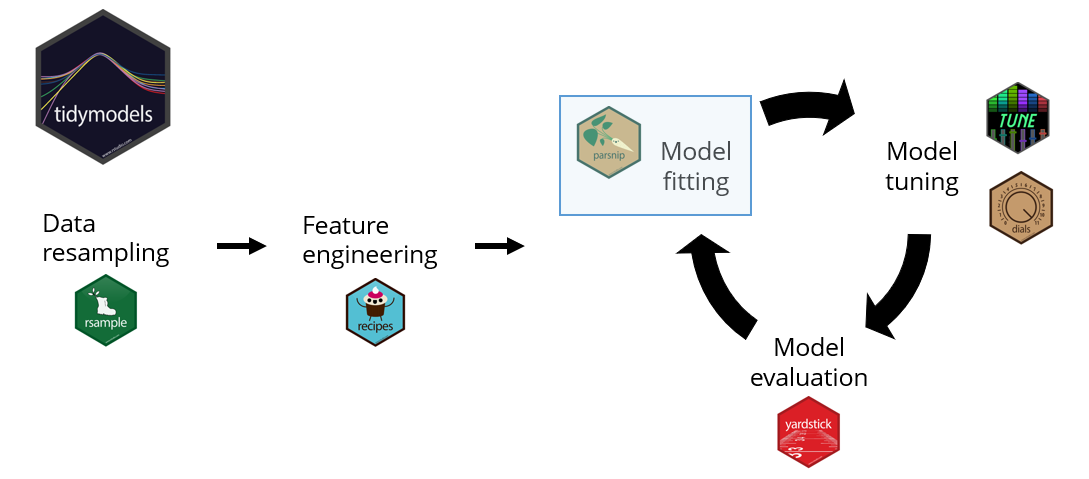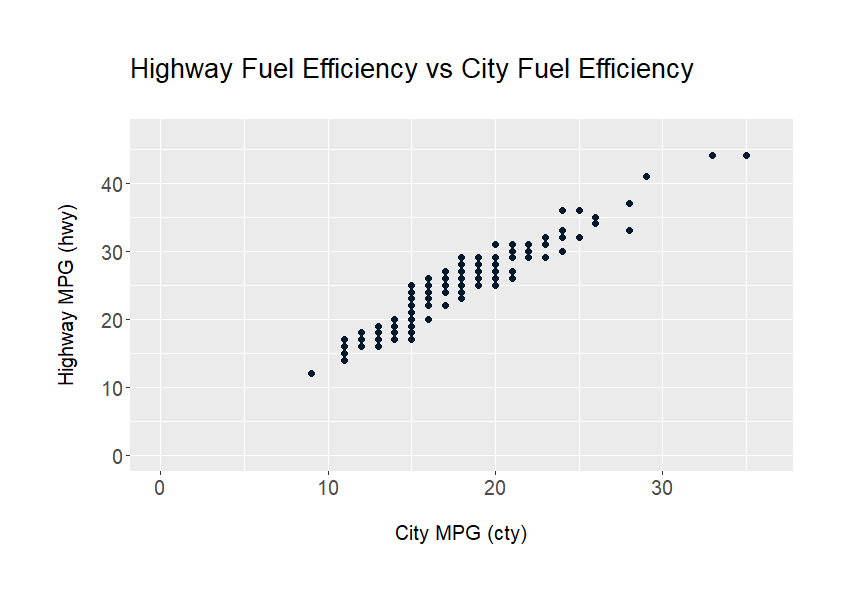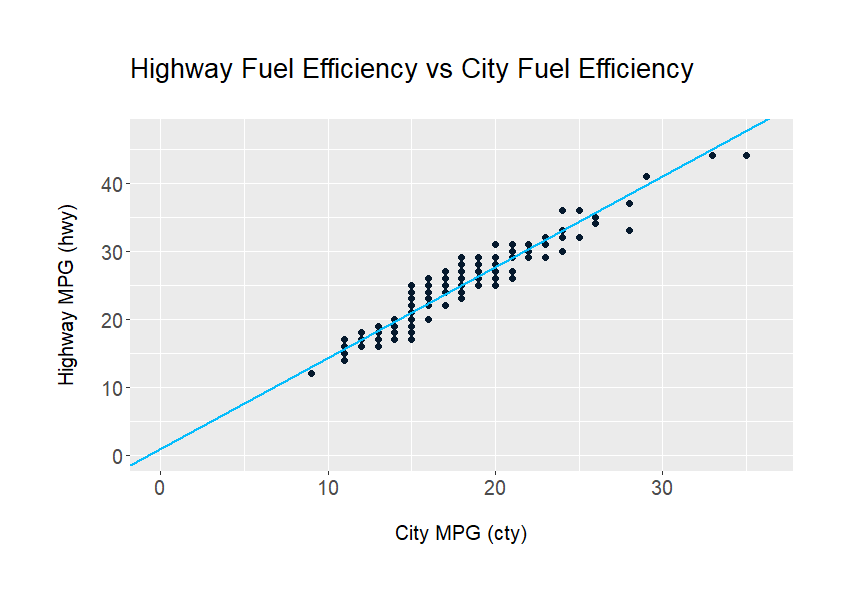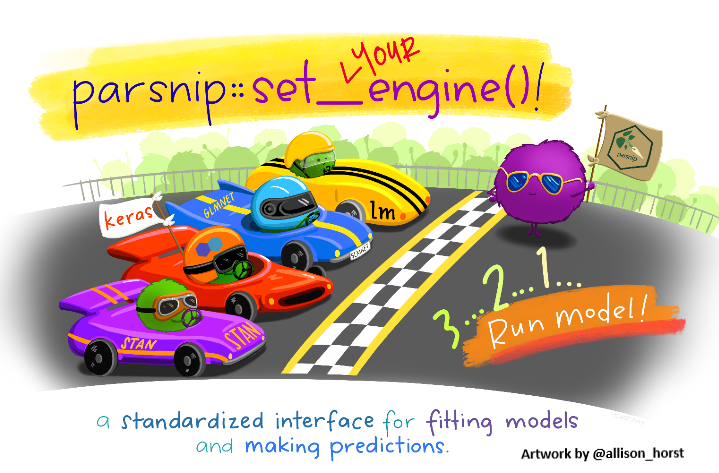Linear regression with tidymodels
Modeling with tidymodels in R

David Svancer
Data Scientist
Model fitting with parsnip
Linear regression model
Predicting hwy using cty as a predictor
$$hwy = \beta_{0} + \beta_{1} cty$$
Model parameters
- $ \beta_{0} $ is the intercept
- $ \beta_{1} $ is the slope
Linear regression model
Predicting hwy using cty as a predictor
$$hwy = \beta_{0} + \beta_{1} cty$$
Model parameters
- $ \beta_{0} $ is the intercept
- $ \beta_{1} $ is the slope
Estimated paramters from training data
$$\small hwy = 0.77 + 1.35(cty)$$
Model formulas
Model formulas in parsnip
- Used to assign column roles
- Outcome variable
- Predictor variables
General form
outcome ~ predictor_1 + predictor_2 + ...
Shorthand notation
outcome ~ .
Predicting hwy using cty as a predictor variable
hwy ~ cty
The parsnip package
Unified syntax for model specification in R
Specify the model type
- Linear regression or other model type
Specify the engine
- Different engines correspond to different underlying R packages
Specify the mode
- Either regression or classification
Fitting a linear regression model
Define model specification with parsnip
linear_reg()
Pass lm_model to the fit() function
- Specify model formula
datato use for model fitting
lm_model <- linear_reg() %>%set_engine('lm') %>%set_mode('regression')
lm_fit <- lm_model %>%
fit(hwy ~ cty, data = mpg_training)
Obtaining the estimated parameters
The tidy() function
- Takes a trained
parsnipmodel object - Creates a model summary tibble
termandestimatecolumn provide estimated parameters
tidy(lm_fit)
# A tibble: 2 x 5
term estimate std.error statistic p.value
<chr> <dbl> <dbl> <dbl> <dbl>
1 (Intercept) 0.769 0.528 1.46 1.47e- 1
2 cty 1.35 0.0305 44.2 6.32e-97
Making predictions
Pass trained parsnip model to the predict() function
new_dataspecifies dataset on which to predict new values
Standardized output from predict()
- Returns a tibble
- Keep rows in the same order as
new_datainput - Names prediction column
.pred
hwy_predictions <- lm_fit %>% predict(new_data = mpg_test)hwy_predictions
# A tibble: 57 x 1
.pred
<dbl>
1 25.0
2 27.7
3 25.0
4 25.0
5 22.3
# ... with 47 more rows
Adding predictions to the test data
The bind_cols() function
- Combines two or more tibbles along the column axis
- Useful for creating a model results tibble
Steps
- Select
hwyandctyfrommpg_test - Pass to
bind_cols()and add predictions column
mpg_test_results <- mpg_test %>% select(hwy, cty) %>%bind_cols(hwy_predictions) mpg_test_results
# A tibble: 57 x 3
hwy cty .pred
<int> <int> <dbl>
1 29 18 25.0
2 31 20 27.7
3 27 18 25.0
4 26 18 25.0
5 25 16 22.3
# ... with 47 more rows
Let's model!
Modeling with tidymodels in R





